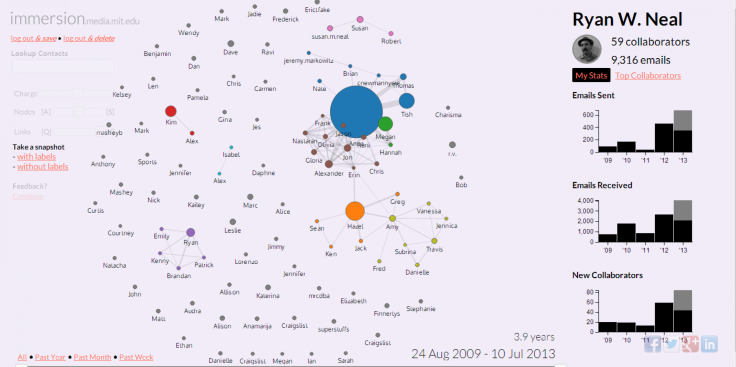What Can The NSA See? MIT Immersion Project Illustrates Metadata PRISM Can Gather

When the world learned about the two secret NSA surveillance programs -- the Verizon data collection and PRISM -- one word that got thrown around a lot was “metadata.” American citizens were told that the NSA only collects metadata, or “data about data,” from cell phone conversations, emails and chats, but what can the NSA actually learn from it?
Quite a bit, actually, as the MIT Media Lab's Immersion project shows. Immersion integrates with a personal Gmail account to create an interactive visualization of the user’s metadata, allowing you to effectively spy on yourself. While Immersion can’t know anything about the content of the emails, it creates a comprehensive and accurate representation of the user’s life. With my account, the most activity is between my former classmates at the Columbia Journalism School, as well as my former roommates and landlords. This makes sense as the two groups often overlapped. While I primarily use other accounts for professional emails, there are sections illustrating some contacts from work.

For each individual contact, you can see the first email to them, the last email, how many have been sent and received, and which were marked as private. It can also make a list of other people this contact introduced you to.
If this is everything the NSA can access for every person using Google, Facebook, Apple, Microsoft, Yahoo, Dropbox, Skype and Verizon, it is more than a bit frightening.
Enter your own account into Immersion to take a look at what the NSA can gather from your Gmail account.
© Copyright IBTimes 2025. All rights reserved.






















